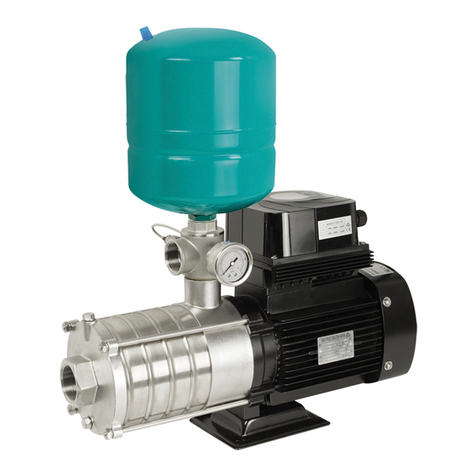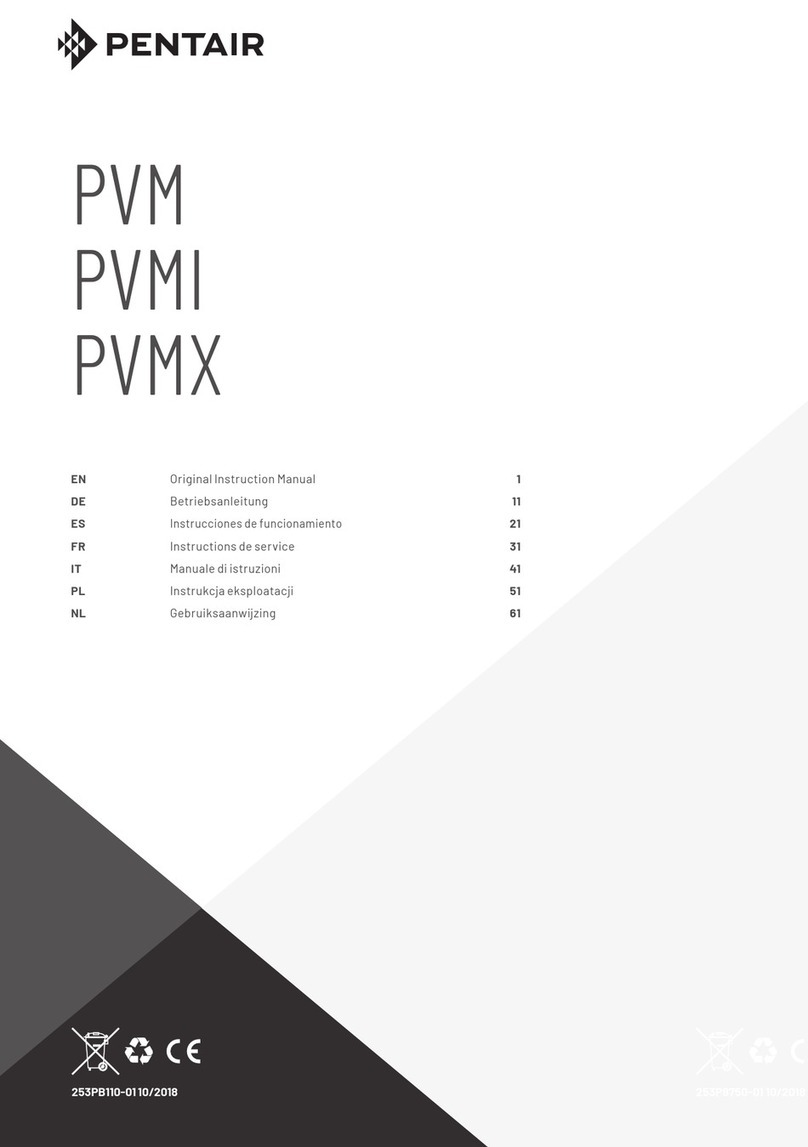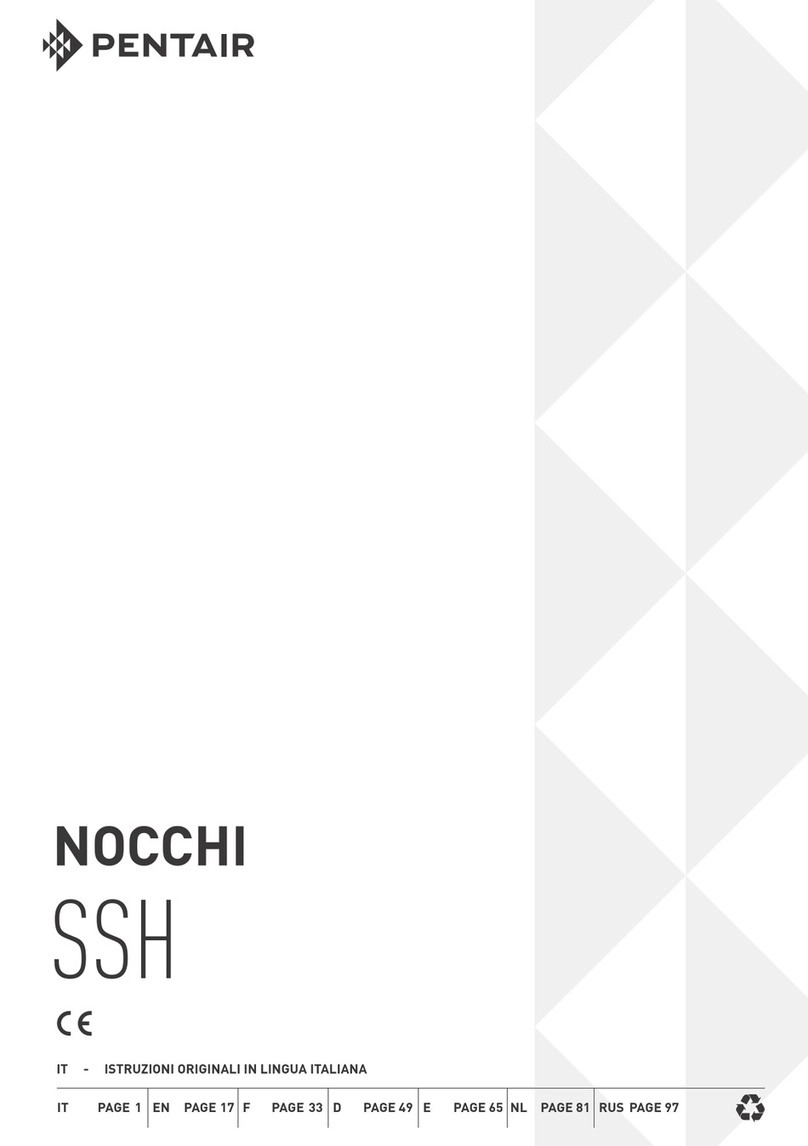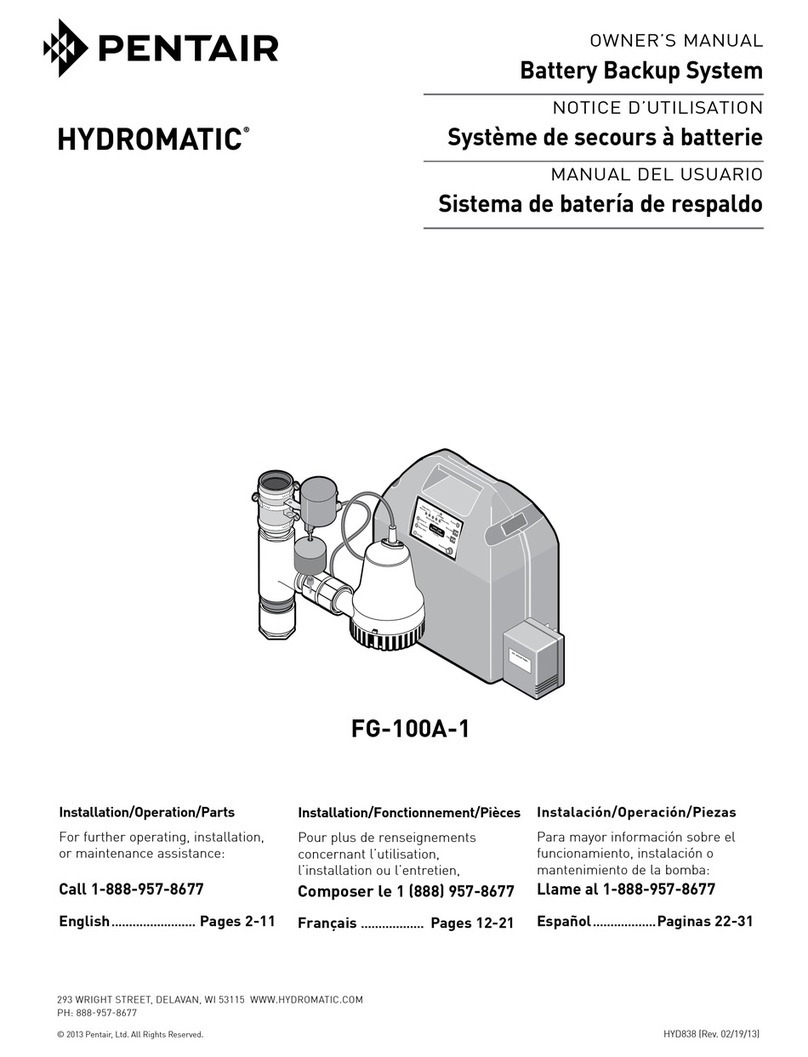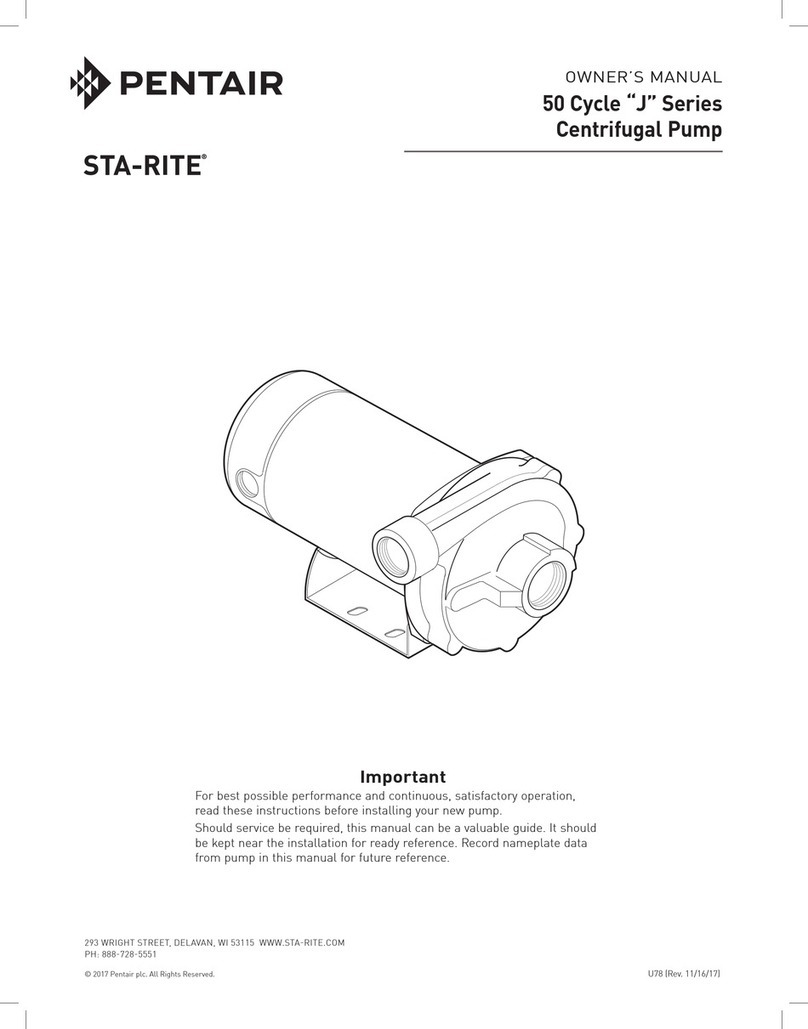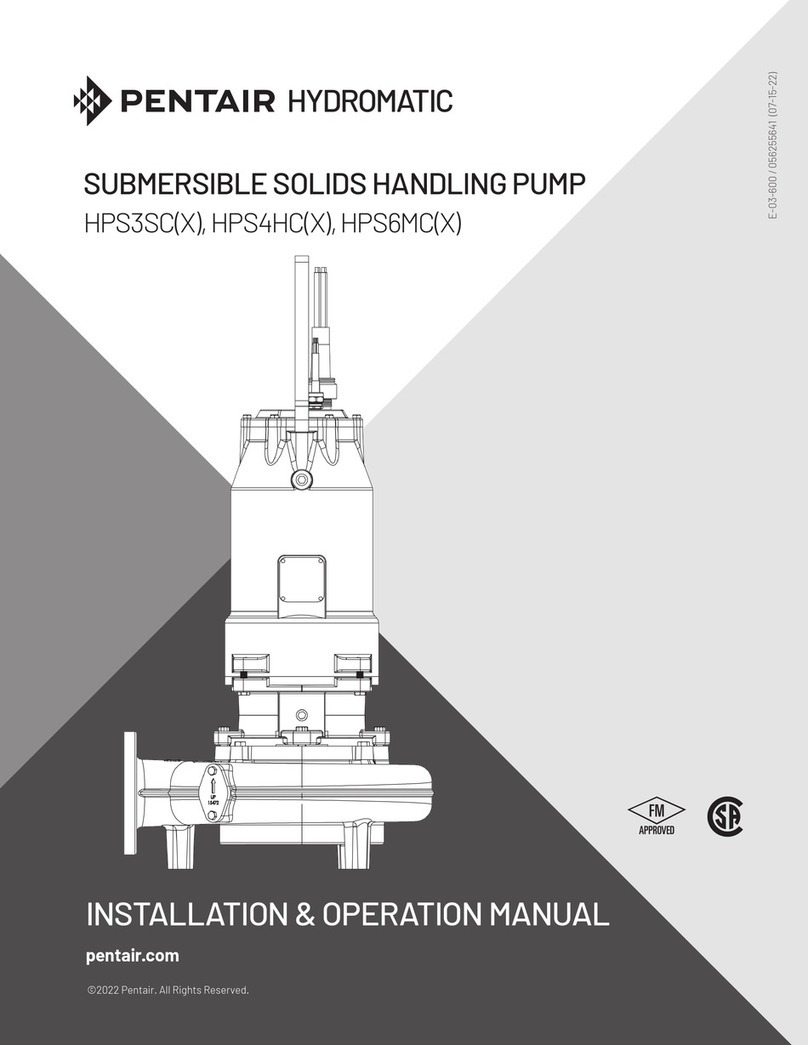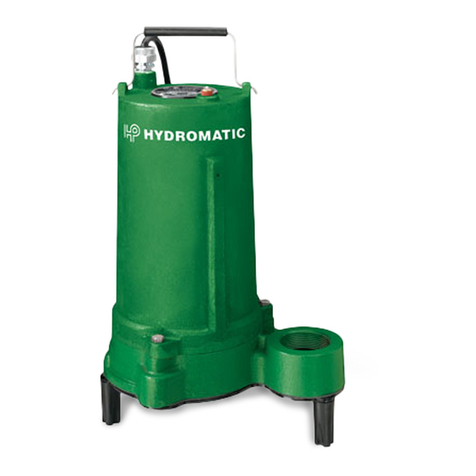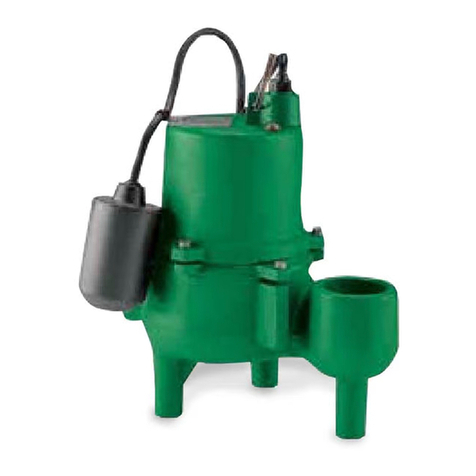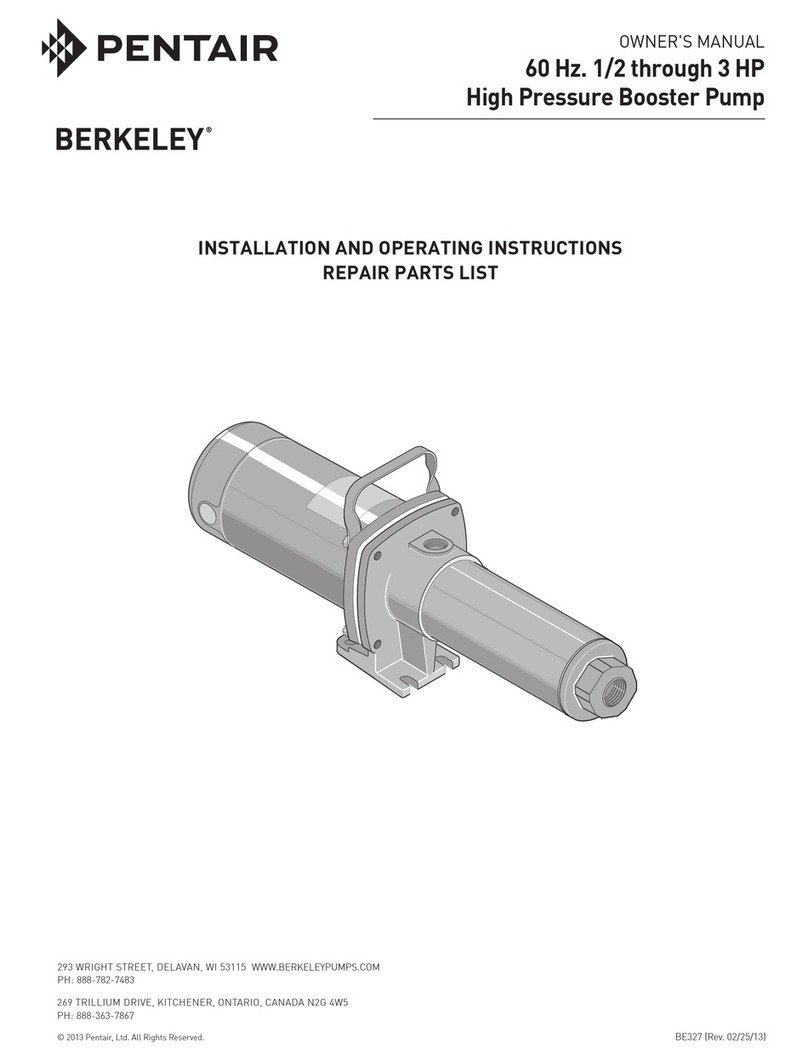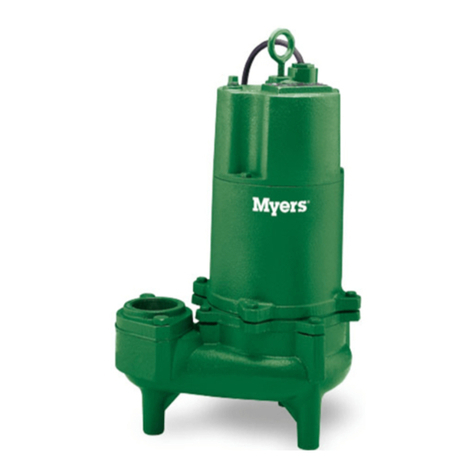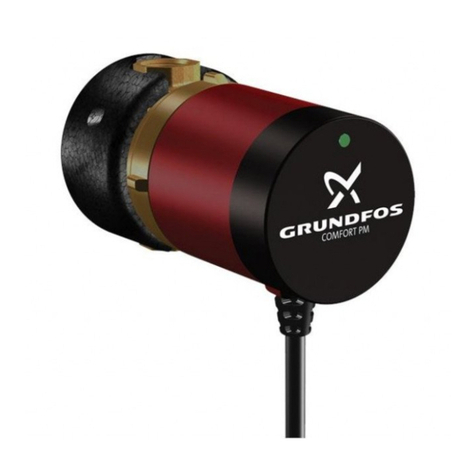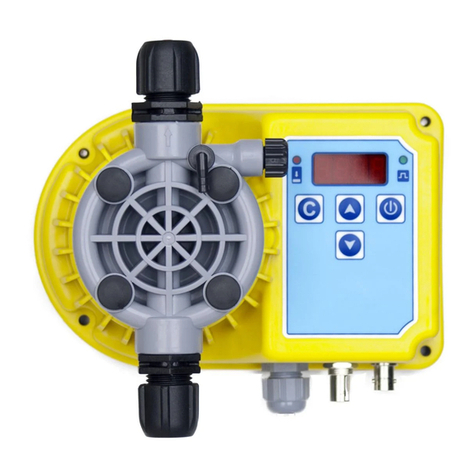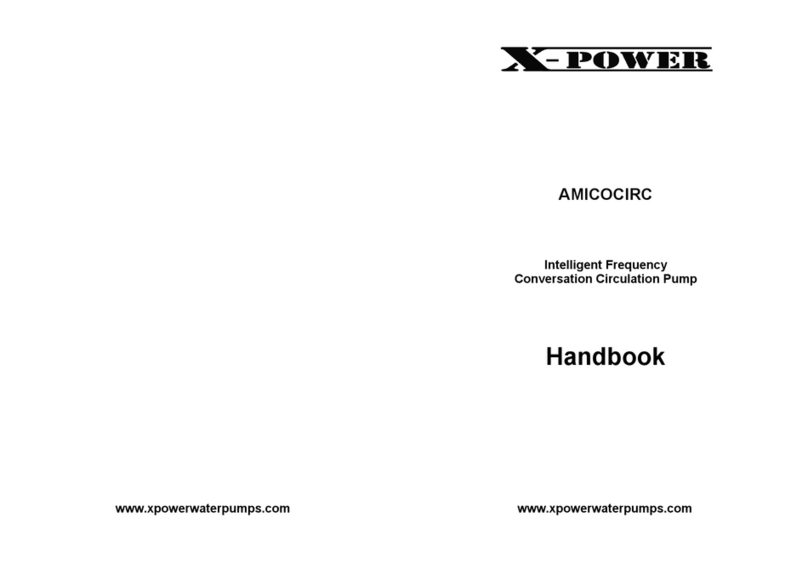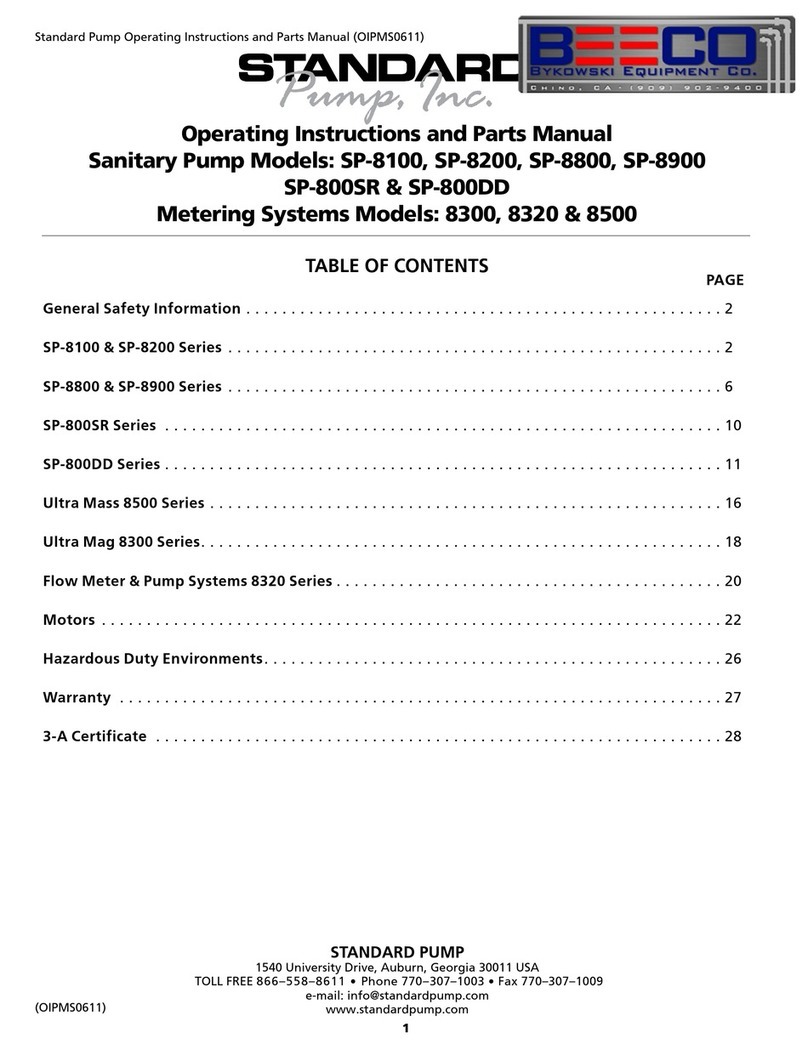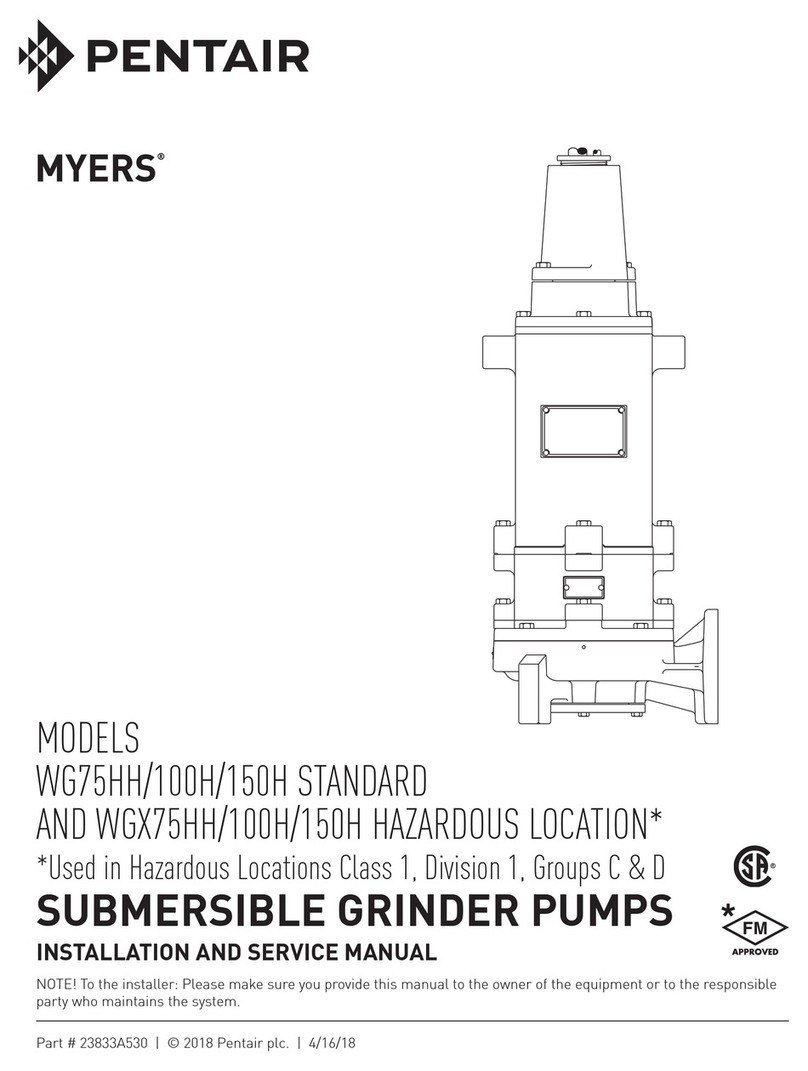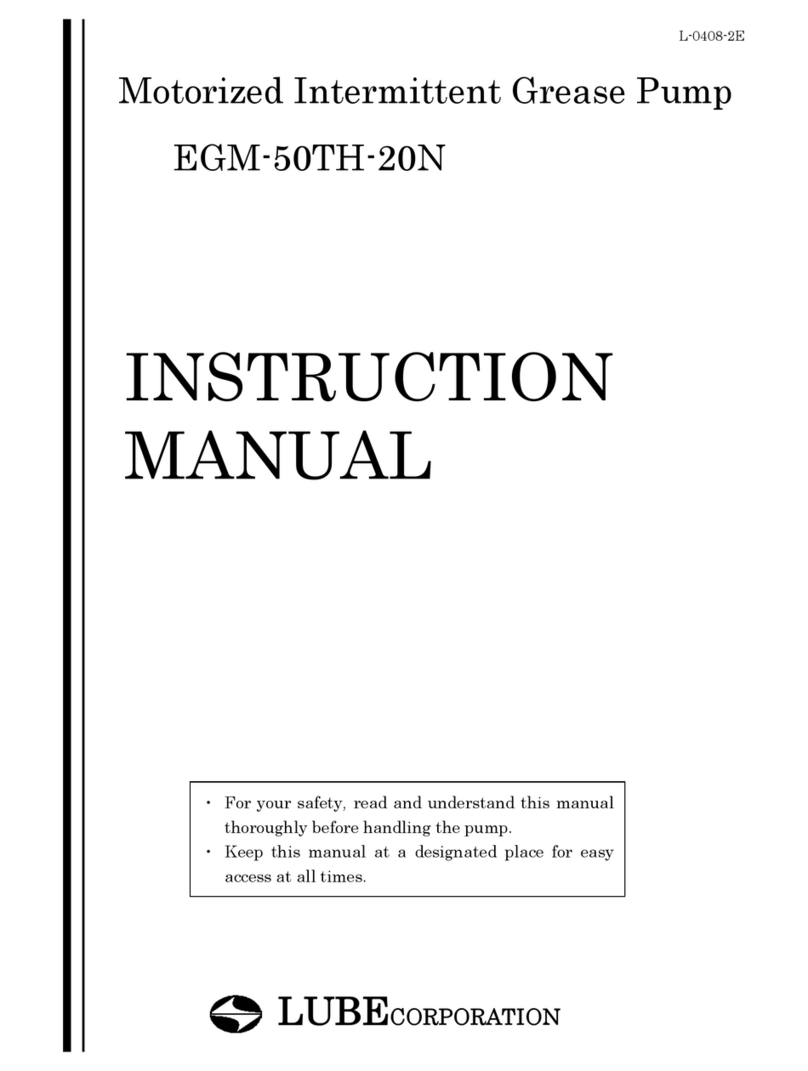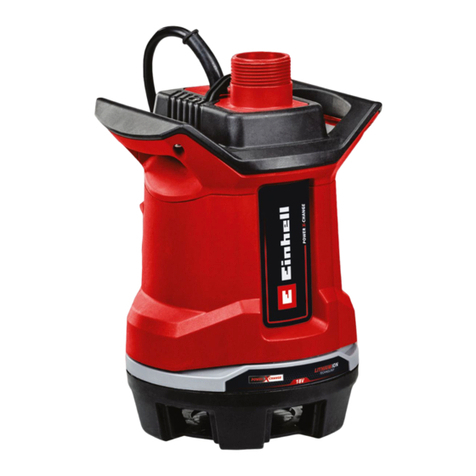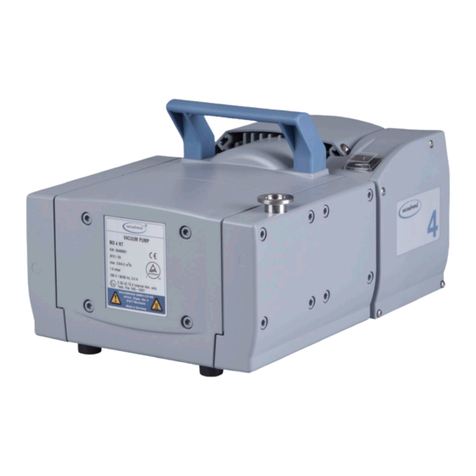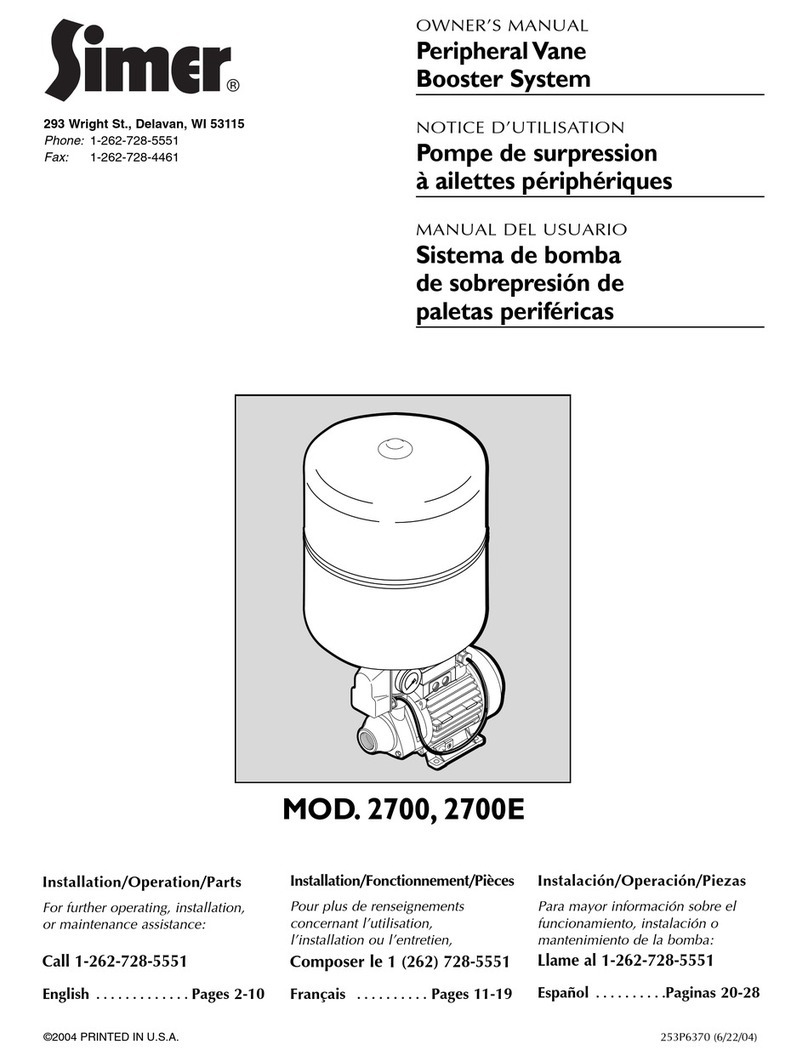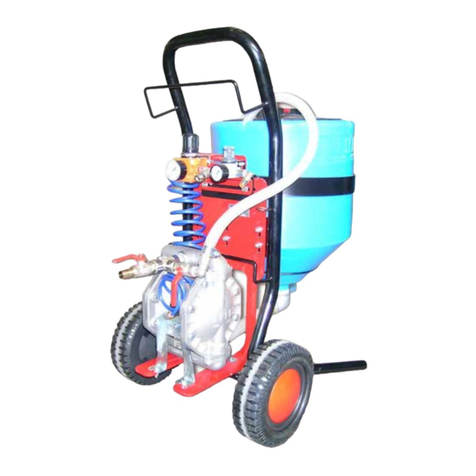
3
The motor is fixed within the motor housing and is completely
submerged in the dielectric oil for maximum heat transfer. The
motor housing and seal chamber are completely sealed with
O-rings located at mating part faces. The power cord entry system
is designed to give reliable sealing.
The first seal is made by compression of a rubber gasket by the
cord grip, thereby expanding to fill the cord entry of the motor
housing. The cord grip forms a second seal around the molded
cord end and provides strain relief.
Application: This pump is designed for either residential or
industrial sewage discharge applications with a pH ranging from 5
to 9, specific gravities from 0.9 to 1.1, viscosities ranging from 28
to 35 S.S.U. and temperatures up to 140°F.
Receiving Pump: Inspect pump on arrival for possible concealed
damage in shipping. Any damage should be reported immediately
to delivering carrier. Claims for damage must originate at the
receiving end. Claims for shipping damage cannot be processed
at the factory.
Codes: All local wiring codes must be observed. Consult the local
inspector before installation to avoid costly delays that can occur
due to rejection after job is finished.
Pump Not Operating Or in Storage: Pumps with carbon ceramic
seals must be manually rotated (6 revolutions) after setting non-
operational for 3 months or longer and prior to electrical start-up.
Installing Pump in Sump: Before installing pump in sump, lay it
on its side and rotate grinder shaft. Stator boot and rotor may be
slightly stuck due to factory test water so it must be broken loose
by rotating shaft with a screwdriver at grinder end. The common
shaft should turn with a slight resistance. Slight lubrication by
means of a small amount of lubricating oil down the cavity inlet of
the stator boot and rotating shaft to prelube stator boot and rotor
before start is recommended. Do not connect the power until after
this test. Clean all trash and sticks from sump and connect pump
to piping. A check valve must be installed on each pump.
Location: If pump is installed in an existing basin or concrete
sump, the piping can either be connected permanently or rails
and brackets can be furnished for mounting to walls of basin. In
either case, be sure that the Delta Environmental solids handling
check valve is used and that the pump is submerged in a
vertical position. The complete factory built packaged system is
recommended for the most satisfactory installation and generally
for the lowest cost where expensive installation labor is involved.
Making Electrical Connections: All electrical wiring must be in
accordance with local code, and only qualified electricians should
make the installation. Complete wiring diagrams are included
for use in making the installation. All wires should be checked
for shorts to ground with an ohmmeter or megger after the
connections are made. This is important, as one grounded wire
can cause considerable trouble.
PUMP OPERATIONS
To reduce the risk of electrical shock, install only on a GFCI
protected circuit. See pump nameplate for electrical ratings.
To start the pump, perform the following steps in order:
1. When grinder pump is single phase, no rotation check
is necessary. Correct rotation is counter-clockwise.
2. Run water into sump until motor is covered.
3. Open gate valve in discharge line.
4. Turn pump on. If pump runs and sump liquid does not pump
down, stop pump and close discharge gate valve. Lift pump
until sealing flange is open to vent off trapped air. Lower
pump, open discharge valve, and start the pump again.
n CAUTION! POSITIVE DISPLACEMENT PUMP IS DESIGNED TO
OPERATE AT MINIMUM 5 GPM CAPACITY. RUNNING PUMP AT
SHUT-OFF CONDITION OR WITH GATE VALVE CLOSED CAN RESULT
IN DAMAGE TO THE PUMPING STATOR BOOT AND ROTOR.
5. Level control should be set so that pump turns off when level
is about 2 inches above inlet of pump suction and turns on
when level is about 2 inches above motor.
6. If problems occur, check power source.
Make sure a separate supply line is available.
Verify voltage supply.
7. Check resistance of windings. If not within guidelines, return
pump to authorized factory service center.
As the motors are oil filled, no lubrication or other maintenance
is required. Pump should be checked every quarter for corrosion
and wear.
PUMP MAINTENANCE
n CAUTION: NEVER WORK ON PUMP WITH POWER ON. MAKE
SURE THAT THE GROUND WIRE IS SECURELY CONNECTED AND
THAT THE UNIT IS PROPERLY GROUNDED IN ACCORDANCE WITH
LOCAL CODES.
n CAUTION: SEVERE INJURY MAY RESULT FROM ACCIDENTAL
CONTACT WITH MOVING CUTTER. KEEP CLOTHING, HANDS AND
FEET AWAY FROM CUTTER ANY TIME POWER IS CONNECTED TO
THE PUMP.
Replacing Cutter Parts: If necessary to replace grinder parts
because of wear or to inspect for clogging:
(1) Close gate valve at pump discharge.
(2) Turn off circuit breaker.
n CAUTION: NEVER WORK ON PUMP WITH POWER ON. BE SURE
GROUND WIRE FROM PUMP IS CONNECTED TO A GOOD GROUND
SUCH AS A WATER PIPE.
(3) Remove pump from sump.
(4) Unscrew screws (5) and remove stationary cutter ring
assembly (4). Radial cutter (3) can be screwed off the
common shaft by lightly tapping cutter and unscrewing
counterclockwise while holding end of common shaft with a
screwdriver in slot at cutter end of shaft.
(5) Radial cutter (3) and stationary cutter (4) can now be
inspected for wear and replaced if necessary.
Stator Boot and Rotor Inspection and/or Replacement:
If necessary to inspect or replace the stator boot and rotor, the
following procedure should be followed.
(1) Unscrew socket head screws (12) and remove volute case
(1). NOTE: Turning common shaft clockwise while removing
volute case can ease removal.
(2) Radial cutter (3) and stationary cutter (4) can be inspected
for wear and replaced if necessary.
(3) Stator boot and rotor are now exposed to check for any
obstructions in or wear of stator boot.








